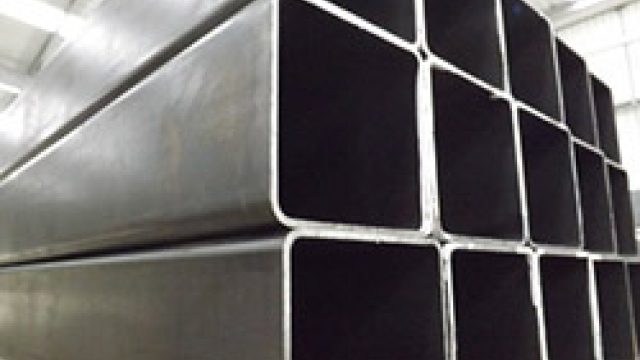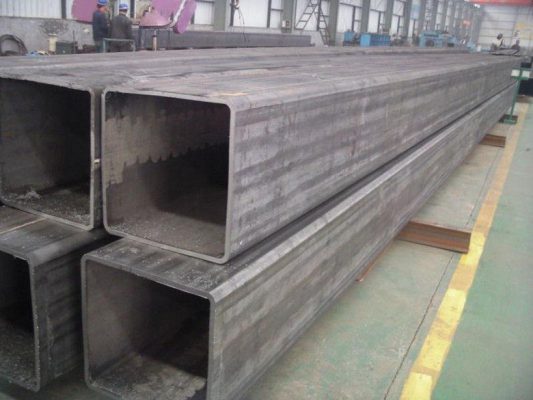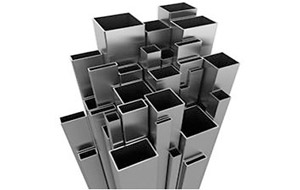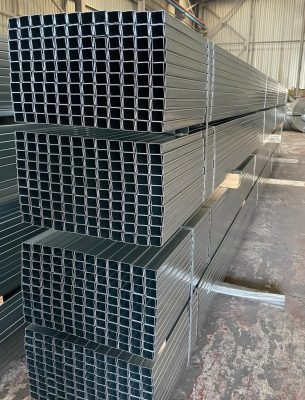Square Profile Weight Calculation
Square iron profile weight calculation, you must first determine the edge widths of the profile you want to use. Then the meat thickness? and finally determine the length, that is, meters. Iron specific gravity It is calculated as 7.85. As a result, the specific gravity of materials such as stainless, steel and aluminum different? Don't forget that it happened.
Weight of square profiles? You can use the following formula to calculate:
Weight = (Side Length x Side Length x Wall Thickness x Density) / 1000
Variables in the formula:
- Weight: Weight of the profile in kg??
- Side Length: Side length of the profile in mm
- Wall Thickness: Wall thickness of the profile in mm
- Density: Density of the material of the profile in kg/m³
Example:
Side length 40 mm, wall thickness The weight of a square profile with a diameter of 3 mm and a density of 7850 kg/m³. To calculate:
Weight = (40 x 40 x 3 x 7850) / 1000 = 4704 kg
Weight of square profile? Factors affecting:
- Side length: As the side length increases, the weight of the profile increases. also increases.
- Wall thickness: Wall thickness As it increases, the weight of the profile increases. also increases.
- Density: As the density of the profile material increases, the weight of the profile increases. also increases.
Before purchasing a square profile:
- Determine the side length of the profile you need and the wall thickness. and determine its material.
- different? Get price quotes from sellers and check prices. compare.
- Weight of the profile? Calculate and take into account the carrying capacity.
- The weight of square profiles may vary depending on the material used. For example, the weight of aluminum square profiles is less than steel square profiles.
- The weight of square profiles may also vary depending on the tolerances used during production.
- The weight of square profiles can be affected by operations such as cutting and welding.
Square Iron Profile Weight Calculation
For square iron profile weight calculation, you can use the following formula:
Weight = (Side Length x Side Length x Wall Thickness x Density) / 1000
Variables in the formula:
- Weight: Weight of the profile in kg??
- Side Length: Side length of the profile in mm
- Wall Thickness: Wall thickness of the profile in mm
- Density: Density of the material of the profile in kg/m³ (7850 kg/m³ for iron)
Example:
Side length 40 mm, wall thickness The weight of a square iron profile with a diameter of 3 mm and a density of 7850 kg/m³. To calculate:
Weight = (40 x 40 x 3 x 7850) / 1000 = 4704 kg
Weight of square iron profile? Factors affecting:
- Side length: As the side length increases, the weight of the profile increases. also increases.
- Wall thickness: Wall thickness As it increases, the weight of the profile increases. also increases.
- Density: As the density of the profile material increases, the weight of the profile increases. also increases.
Before purchasing square iron profile:
- Square iron profile prices? Examine it well.
- Determine the side length of the profile you need and the wall thickness. and determine its material.
- different? Get price quotes from sellers and check prices. compare.
- Weight of the profile? Calculate and take into account the carrying capacity.




Square Iron Profile Weight Calculation
Weight: kg
Square Iron Profile Types
Square iron profile weight calculation is preceded by many different types, namely produced in various sizes and thicknesses. It is a versatile structural material used in practice. Some of the most common types of square iron profiles: are:
- Hot Rolled? Square Iron Profile: These profiles are rolled at high temperatures. It is produced from steel and has a rough surface appearance. They are strong and durable and are used in construction, machinery manufacturing. and other heavy industrial applications. They are ideal for.
- Cold Rolled? Square Iron Profile: These profiles are rolled at room temperature. It is made of steel and has a smooth surface appearance. Hot rolled? They are less durable than profiles, but can be shaped better and have more precise dimensional tolerances.
- Square Iron Profile with Tensile Section: These profiles are hot rolled. It is produced by drawing from steel plates and is lighter and thinner than other square iron profiles. They are less durable, but can be shaped better and used to create more complex profiles.
- Kö?ebent Profile: These profiles are welded together at two right angles. It consists of two planes. They are sturdy and durable and are ideal for framing, bracing and other structural applications.
- Pipe Profile: These profiles are a hollow, circular-section structural material. They are lightweight and durable and can be used as posts, beams and other structural elements.
Square Iron Profiles Quality
Square iron profiles are produced differently according to their production methods and chemical composition. It is produced in high quality. The most common square iron profile qualities are:
S235JR:
- This is the most common square iron profile grade.
- It is classified as structural steel and is used in construction, machinery manufacturing. and other general purpose Suitable for applications.
- Chemical composition: %0.15-0.25 Carbon, %0.55-1.60 Manganese, %0.040 maximum Phosphorus, %0.040 maximum Sulfur.
- Mekanik özellikleri: 235 MPa minimum Akma Dayan?m?, 450 MPa minimum Çekme Dayan?m?, %22 minimum Uzama.
S355JR:
- This is a higher strength square iron profile grade than S235JR.
- It can carry heavier loads. It is used for required structures and machines.
- Chemical composition: %0.15-0.25 Carbon, %0.55-1.60 Manganese, %0.040 maximum Phosphorus, %0.040 maximum Sulfur.
- Mekanik özellikleri: 355 MPa minimum Akma Dayan?m?, 510 MPa minimum Çekme Dayan?m?, %20 minimum Uzama.
St44-2:
- This is a square iron profile grade with higher strength and better toughness than S355JR.
- Suitable for use at low temperatures and impact resistant. to be? It is used for required structures and machines.
- Chemical composition: %0.16-0.24 Carbon, %0.40-1.35 Manganese, %0.050 maximum Phosphorus, %0.050 maximum Sulfur.
- Mekanik özellikleri: 440 MPa minimum Akma Dayan?m?, 580 MPa minimum Çekme Dayan?m?, %27 minimum Uzama.
DIN 17100:
- This is a square iron profile quality produced according to German standard.
- It has similar strength properties to S235JR and S355JR.
- It is widely used in Europe.
ASTM A36:
- This is a quality of square iron profile produced according to American standard.
- It has similar strength properties to S235JR.
- It is widely used in the United States.
Square Iron Profile Carrying Capacity Table
Square iron profile carrying capacity depends on the profile's cross-sectional area, length, material and strength. Below is a general carrying capacity table for S235JR quality square iron profiles:
| Cross-Sectional Area? (mm²) | Height (m) | Carrying Capacity (kN) |
|---|---|---|
| 16 | 1 | 2.56 |
| 16 | 2 | 5.12 |
| 16 | 3 | 7.68 |
| 25 | 1 | 4.00 |
| 25 | 2 | 8.00 |
| 25 | 3 | 12.00 |
| 36 | 1 | 5.76 |
| 36 | 2 | 11.52 |
| 36 | 3 | 17.28 |
| 49 | 1 | 7.84 |
| 49 | 2 | 15.68 |
| 49 | 3 | 23.52 |
| 64 | 1 | 10.24 |
| 64 | 2 | 20.48 |
| 64 | 3 | 30.72 |
- This table is a general guide only. The actual carrying capacity depends on the production tolerances of the profile, connection details. It may vary depending on the details and the type of installation.
- For exact bearing capacity, it is recommended to contact a structural engineer or steel supplier.
Other factors affecting carrying capacity:
- Strength: Higher strength materials such as S355JR and St44-2 Profiles made of steel have higher carrying capacity.
- Section Shape: Different like rectangular or round? The carrying capacity of profiles with cross-sectional shapes is also different.
- Installation type: Different types such as axial, bending or torsion. Loading types vary the carrying capacity of the profile. It affects the way.
Square Profile weight calculation, kg, kilo, ton, height, piece, head, amount, 6meter, weight, weight, box, calculation, carrying, iron, 40×40, 40× 60, 2mm, 1.5mm, 1mm, steel, painted, metal, istanbul, izmir, ardahan, bursa, Sinop, u?ak, ?sparta, denizli, tokat, sivas
